Sphagnum
Sphagnum L.
Family: Sphagnaceae
Common names: peat moss, bog moss, turf moss
Introduction
Sphagnum is a cosmopolitan as well as economically and ecologically important genus of mosses.

Description
Description
Sphagnum is the only genus in the family Sphagnaceae. The plant forms clusters of short branches (heads or coma) above, and below the heads, elongated spaced out tufts (fascicles) of branches are formed along the stem. Each tuft is often made up of three to eight branches. The plant is pale green with shades of pink, red, yellow or brown. The stems are erect and individually weak and gain support by aggregation and growing in dense masses or cushions. The length of the stem is practically indefinite (Cavers 1971). It is believed that Sphagnum plants can live for thousands of years as the shoot of the plant is continually growing upwards as the plant dies back below. The leaves are differentiated: the stem leaves are small, fewer and spaced out; triangular to oblong or linear, while the branch leaves are numerous and crowded; oval or ovate to lanceolate. The adult Sphagnum lacks rhizoids and absorbs water directly through the stem and leaves.
Sphagnum is dioecious (male and female flowers borne on separate plants) or monoecious (male and female flowers borne on same plant). The male (perigonia) and the female (perichaetia) inflorescences are borne on special apical branches. The sporophyte is elevated above the perichaetial leaves. The capsule lacks a peristome. The operculum is convex. The calyptra is colourless and membranous. The spores are weakly ornamented. For moss terminology see Magill (1981).

Illustrations by G. Condy
10. habit 11. stem and fascicle 12. stem in cross section 13. stem leaf 14. branch leaf 15. stem leaf in cross section 16. branch leaf in cross section 17. stem leaf cells 18. branch leaf cells
Conservation Status
Status
There is no definite record on the conservation of Sphagnum moss in South Africa, because true bogs, in the northern sense, are not formed (Magill 1981) and there is very little peat moss in our wetlands. However, due to increased urbanisation, industrial developments and global warming challenges, SANBI is one of the major role players in ensuring conservation and sustainable use of wetlands in South Africa.
Distribution and habitat
Distribution description
Sphagnum occurs throughout the world, with the northern hemisphere regions, e.g. Canada and North America, being the centres of dominance. It extends from the tropics and north and south temperate zones to subarctic and antarctic regions (Parihar 1965). Peat moss generally prefers very wet or damp habitats. In South Africa it grows on soil or rocks in wet, shaded forested areas, mountain seeps, stream banks, near waterfalls, small pools, open swamps, drainage lines, and seepage areas.
Ecology
Ecology
Peat moss grows in a humid environment where soil conditions are acidic. The presence of a colloidal substance in cell walls liberates acid. The pH of the water of Sphagnum bog may range from 3.7 to 4.9 (Parihar 1965). The acidity inhibits bacterial and fungal growth. The old, lower part of this moss does not readily die because the acidity of its environment discourages the growth of micro-organisms and it therefore decomposes slowly. This partly dead tissue eventually forms a Sphagnum mass, mixed with other plant remains. This mass is slowly compressed and hardened over the years and forms a compact dark coloured substance known as peat, hence the name peat moss (Parihar 1965). It is this compact mass from which fuel in the form of coal, may be produced.
The leaves of Sphagnum are made up of dead, relatively large inflated water-storage cells (leucocysts), generally with numerous fibrils and pores. It is these specialised cells that give this genus its unique, high water-holding capacity. Wet mass of Sphagnum can be up to 20 times its dry mass (Glime 2007). The leucocysts are surrounded by a network of living, narrow, elongated chlorophyll-containing cells (chlorocysts). The classification of the Sphagna (peat mosses) is primarily based on the structure of these two kinds of cells (Cavers 1971).
Like other mosses, Sphagnum is resistant to desiccation. The plant loses water in dry conditions, appears white and brittle, and becomes dormant but then springs back to life and looks green or tinged with colour in wet conditions.
Uses
Use
The varied uses of peat moss can be classified as ecological (good environmental status indicators, heavy-metal pollution monitoring and clean-up); economical (fuel as a source of coal); household (cushioning, lining, packaging and decoration); medicinal (antiseptic, antibiotic); and horticultural. However, Sphagnum is one of the most vulnerable group of plants, and it takes a number of years before a peat bog or a Sphagnum population can recover after sampling. Therefore, for conservation reasons, the sale and the use of Sphagnum peat is being deplored, and the continuing loss of its unique habitat is one of greatest conservation problems. In her recommendations, Staddon (2006) advised that the penalties for harvesting illegally from peat bogs should be tougher.
Species
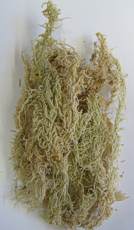
Sphagnum consists of up to 350 species worldwide. Seven species occur in southern Africa:
Sphagnum capense Hornsch.
Occurs in Zimbabwe, Eastern and Western Cape, KwaZulu-Natal, Mpumalanga, Free State, Limpopo and the East African islands. The leucocyst ornamentation distinguishes this species from the rest. Also, the stem leaf fibrils are regular and well developed.
Photo by N. Phephu
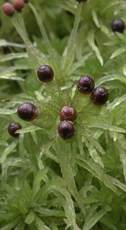
Sphagnum fimbriatum Wilson
Presently known from Belfast in Mpumalanga. The species was possibly introduced from Europe during trout introduction in the streams of that area (Magill 1981).
Photo by Jan-Peter Frahm. Copyright permitted by author.

Sphagnum perichaetiale Hampe
Known from the East African islands, Western Cape and KwaZulu-Natal, this robust species is characterised by the hyaline cell wall thickening (hyalodermis) on leucocysts and stem cortex.
Photo by N. Phephu
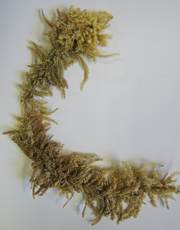
Sphagnum pycnocladulum Müll.Hal.
Known from the Western and Eastern Cape and eastern Africa. It resembles S. capense but the two can be separated by differences in the number of branches in the fascicles, leaf size and the shape of the fibrils in the leucocysts.
Photo by N. Phephu
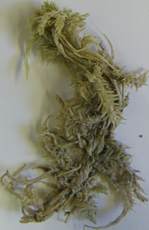
Sphagnum strictum Sull. subsp. pappeanum (Müll.Hal.) A.Eddy
Occurs in the East African islands, Swaziland, Western Cape, KwaZulu-Natal and Mpumalanga. The difference between the southern African subsp. pappeanum and the typical northern subspecies is found in the leaves and chlorocysts.
Photo by N. Phephu
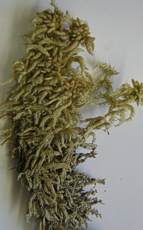
Sphagnum truncatum Hornsch.
Endemic to southern Africa and grows in the Eastern and Western Cape, KwaZulu-Natal and all the northern provinces of southern Africa. This species is characterised by large branch leaves and a single-layered hyalodermis.
Photo by N. Phephu

Sphagnum violascens Müll.Hal.
Found on damp soil or rocks in the East African islands, in Zimbabwe as well as Limpopo and the Western Cape. The plant is characterised by its striking, vivid pink colour.
References
- Cavers, F. 1971. The inter-relationships of the Bryophyta. New Phytologist 4: 152, 157. Dowsons of Pall Mall, London.
- Fletcher, M. 1991. Moss grower's handbook : 31. Seventy Press, Berkshire.
- Glime, J.M. 2007. Bryophyte ecology, vol. 5, 12: 4. Mitchigan Technological University.
- Jewel, A.L. 1964. The observer's book of mosses and liverworts : 41, 42. Frederick Warne, London.
- Magill, R.E. 1981. Flora of southern Africa: Bryophyta, part1, fascicle 1: 23âe"32.
- Parihar, N.S. 1965. Bryophyta: an introduction to Embryophyta, vol. 1: 166, 177, 193, 195. Central Book Depot, Allahabad.
- Scott, G.A.M. & Stone, I.G. 1976. The Mosses of Southern Australia. Code of Collectors: xv. Academic Press, London.
- Staddon, S. 2006. MSc Dissertation : The Harvest and Trade of Moss in Scotland. http://rbg- eb2.rbge.org.uk/ethnobotany/ntfp/pdfs/Moss_Study_Summary_Report.pdf.
Credits
N. Phephu
Pretoria National Herbarium
March 2009
Plant Attributes:
Plant Type: Moss
SA Distribution:
Soil type:
Flowering season:
PH:
Flower colour:
Aspect:
Gardening skill:
Special Features:
Horticultural zones






Rate this article
Article well written and informative
Rate this plant
Is this an interesting plant?
Login to add your Comment
Back to topNot registered yet? Click here to register.